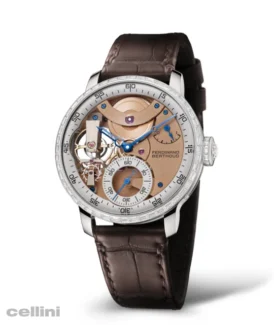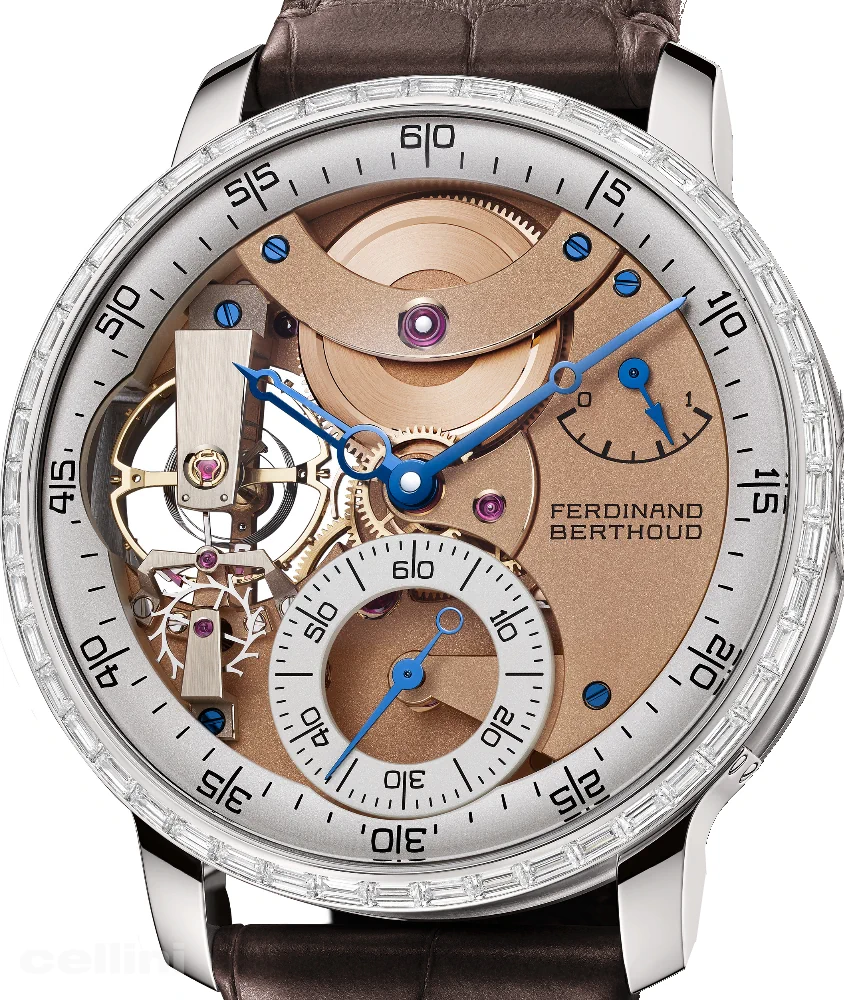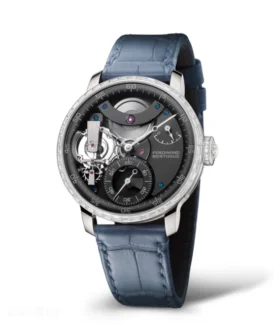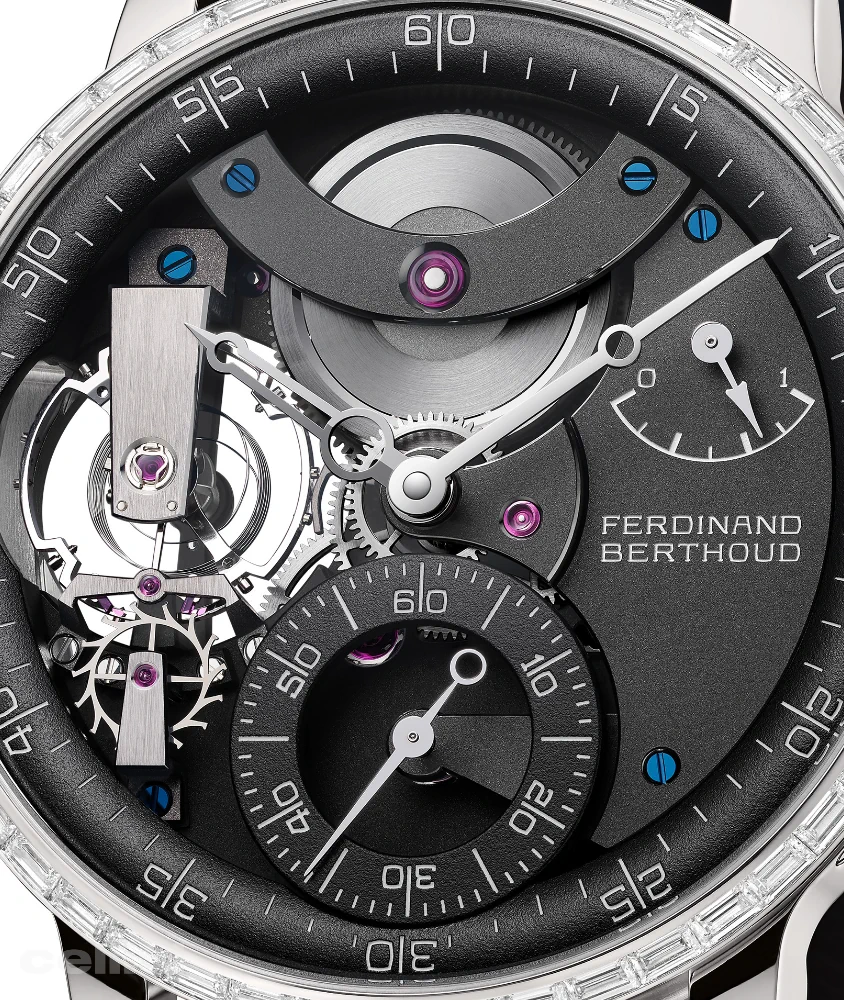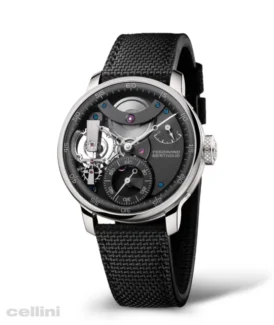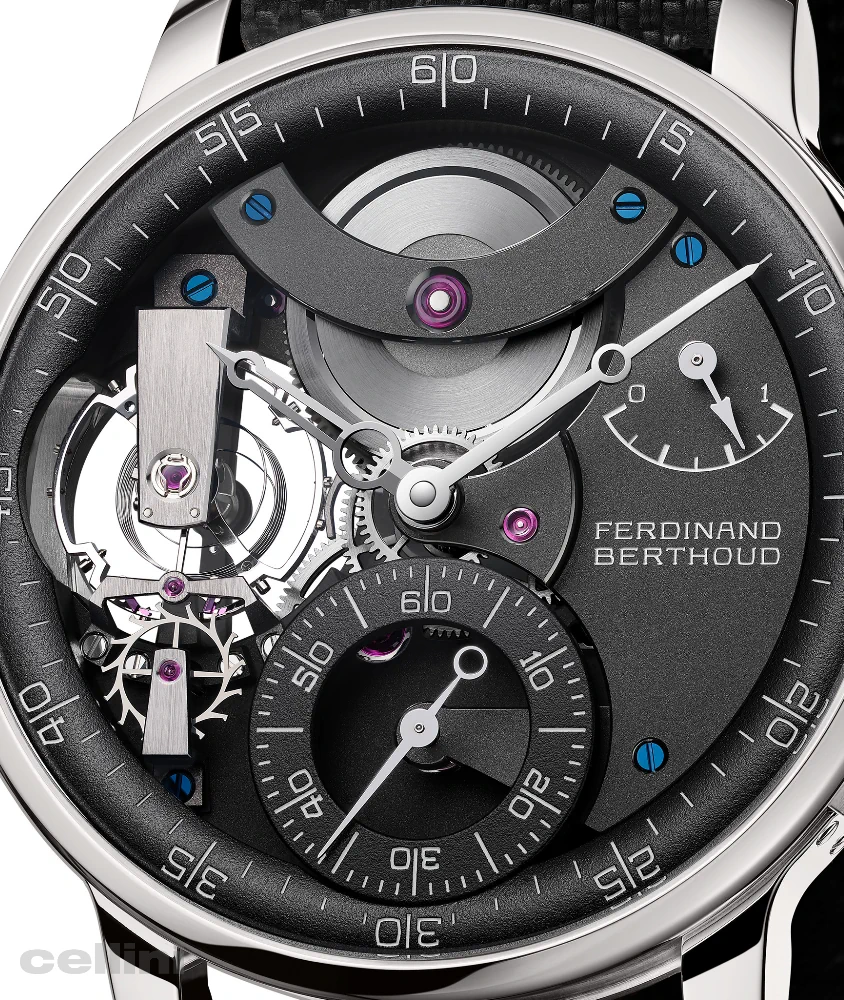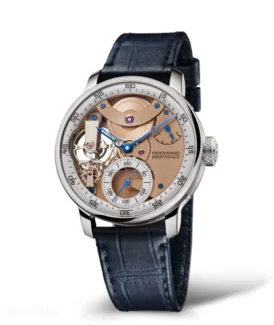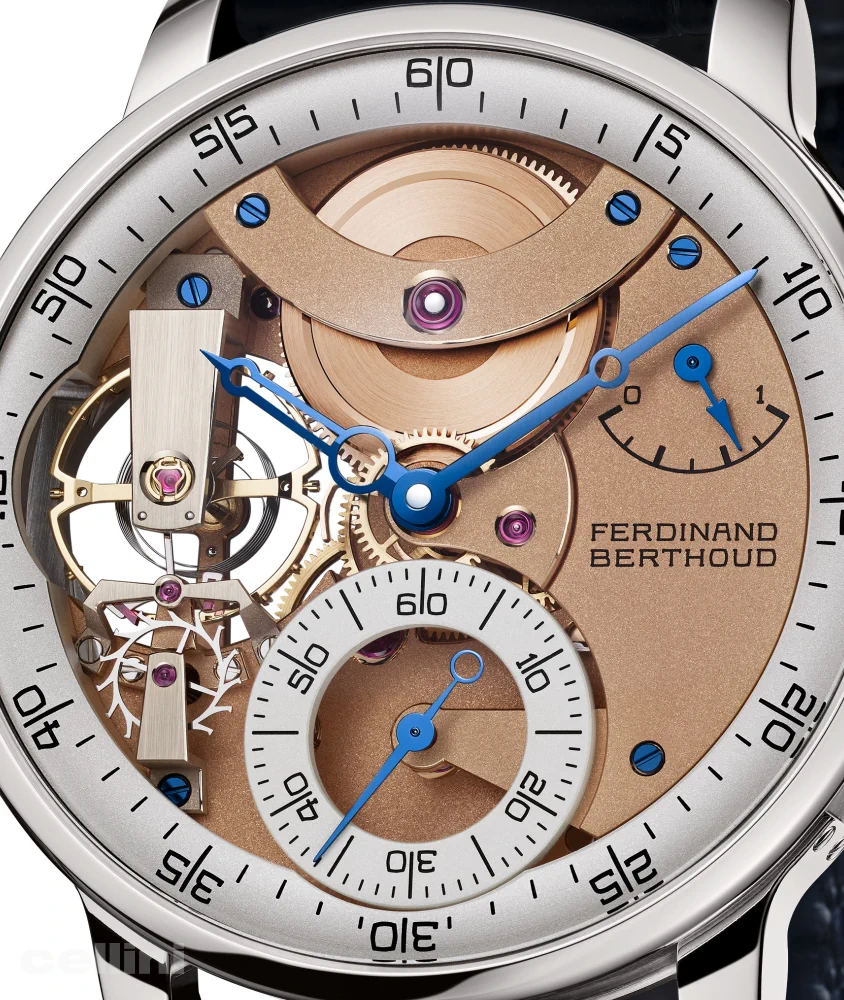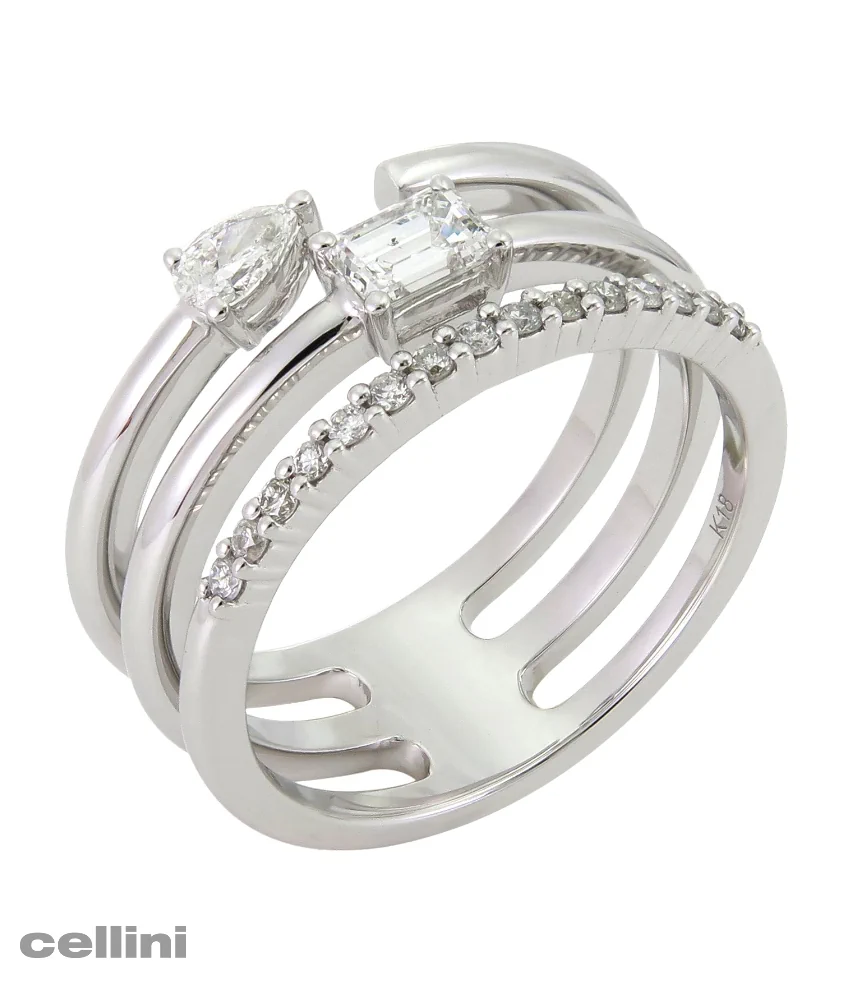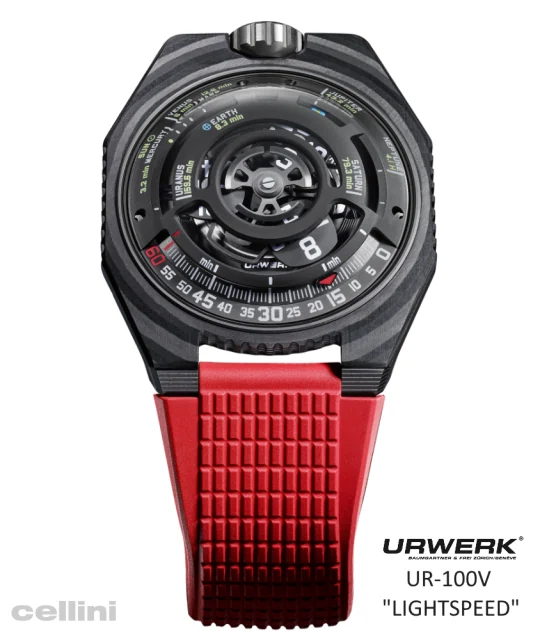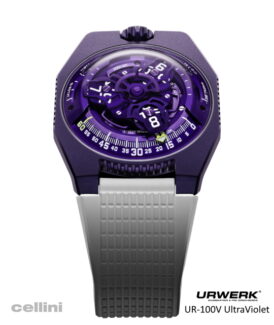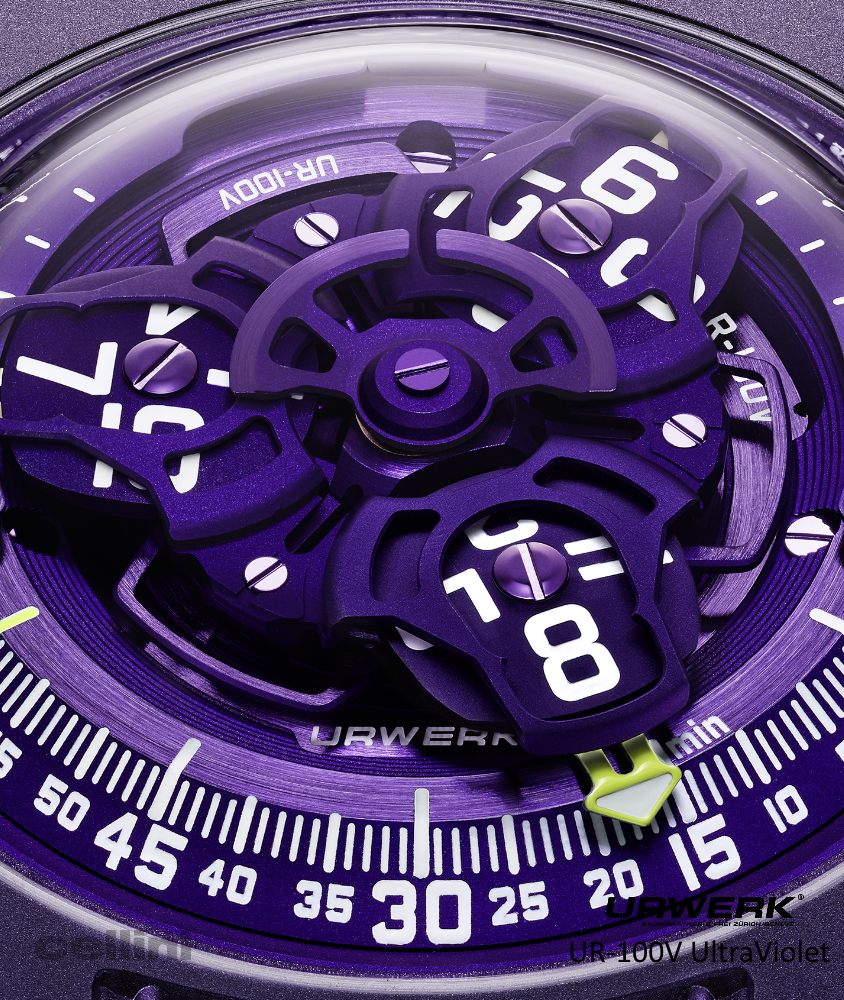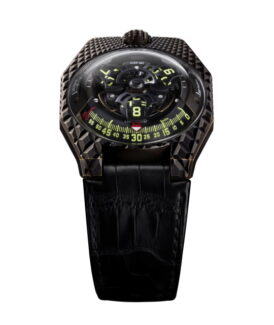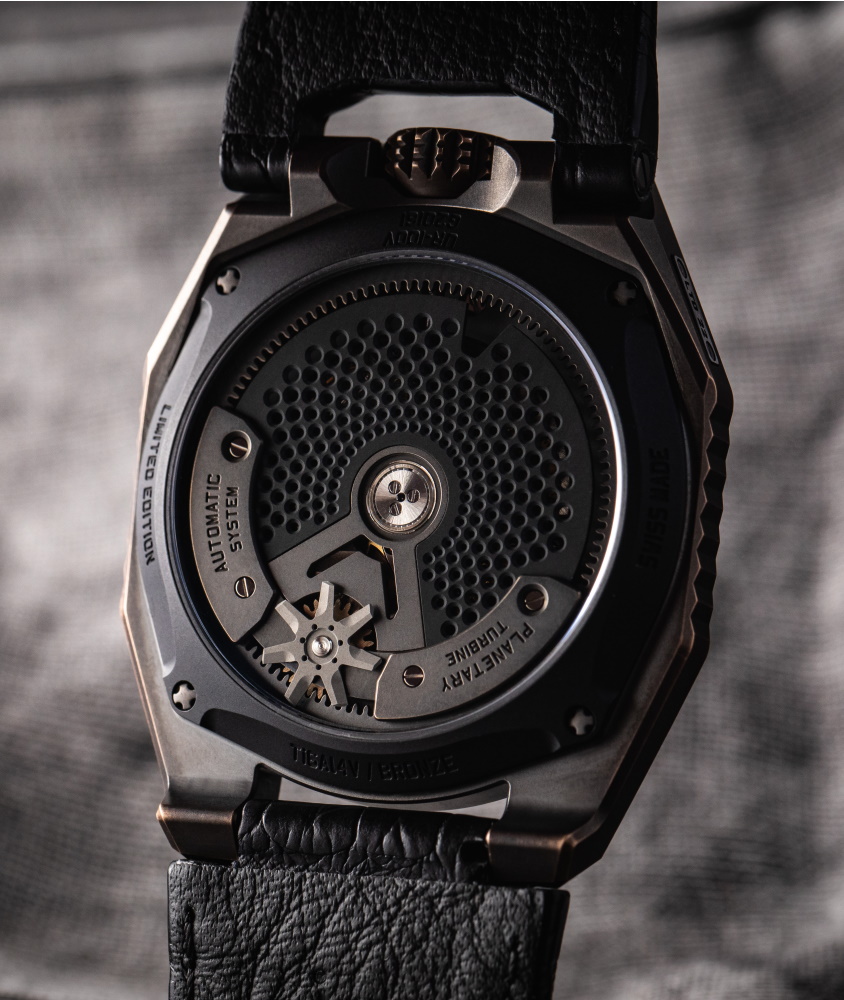UR-100V Light Speed
Reference# UR-100V LS- Details
- Description
- Case: Black carbon (54-layer ThinPly). Caseback in sand-blasted, shot-blasted DLC-treated Grade 5 titanium.
- Size: w 43 mm x L 51.73 x 14.55 mm thick
- Movement: Selfwinding UR 12.02 movement governed by a Windfänger airscrew
- Function: Satellite hours; minutes; time required for a sunbeam to reach eight of the planets in the solar system.
- Power Reserve: 48 hr
- Water Resistance: 50 m
- Dial: Satellite hours; minutes; rotational distance at the Equator in 20 minutes; orbital distance in 20 minutes
- Strap/Bracelet: Textured rubber with folding clasp
URWERK’s UR-100V LightSpeed is the realisation of bringing Time, Space and Light together in a single place.
URWERK’s artistic director and co-founder Martin Frei says: “Wearing this creation is like having a piece of the universe on your wrist, a vision of the cosmos in miniature, on a human scale.”
The UR-100V LightSpeed houses a 3D planetarium featuring eight celestial bodies from our solar system, eight points of reference. “Starting from the Sun, we calculated and illustrated the time taken for a ray of light to reach each of the planets. The Sun’s rays take 8.3 minutes to reach the Earth, while the same ray reaches the surface of Jupiter 35 minutes later. A journey through space and time with light as the medium, the most magical of all vessels” he explains. “This is the story we were all told as children”, adds URWERK’s master watchmaker and co-founder Felix Baumgartner. “It is the one that explains our place on Earth, the immensity of the universe and our out-of-step relationship with the present moment: by the time the light of a star reaches us, that star has probably long since ceased to shine. What we see is no longer there; we perceive a time, a past that no longer exists.”
In addition to its interstellar dimension, the UR-100V LightSpeed pick up the principle of displaying the hours and minutes, which is based on the absence of hands. Instead, a satellite moves along an arc of a graduated circle. The first carries the hours, the second the minutes. And when an hour satellite has covered its 60 minutes, the next one bearing the next hour, appears in front of the minutes index. No one could have imagined that this principle – extrapolated from a 17th century clock – could be so creatively thought out, transformed and transmuted in space, volume and time.

